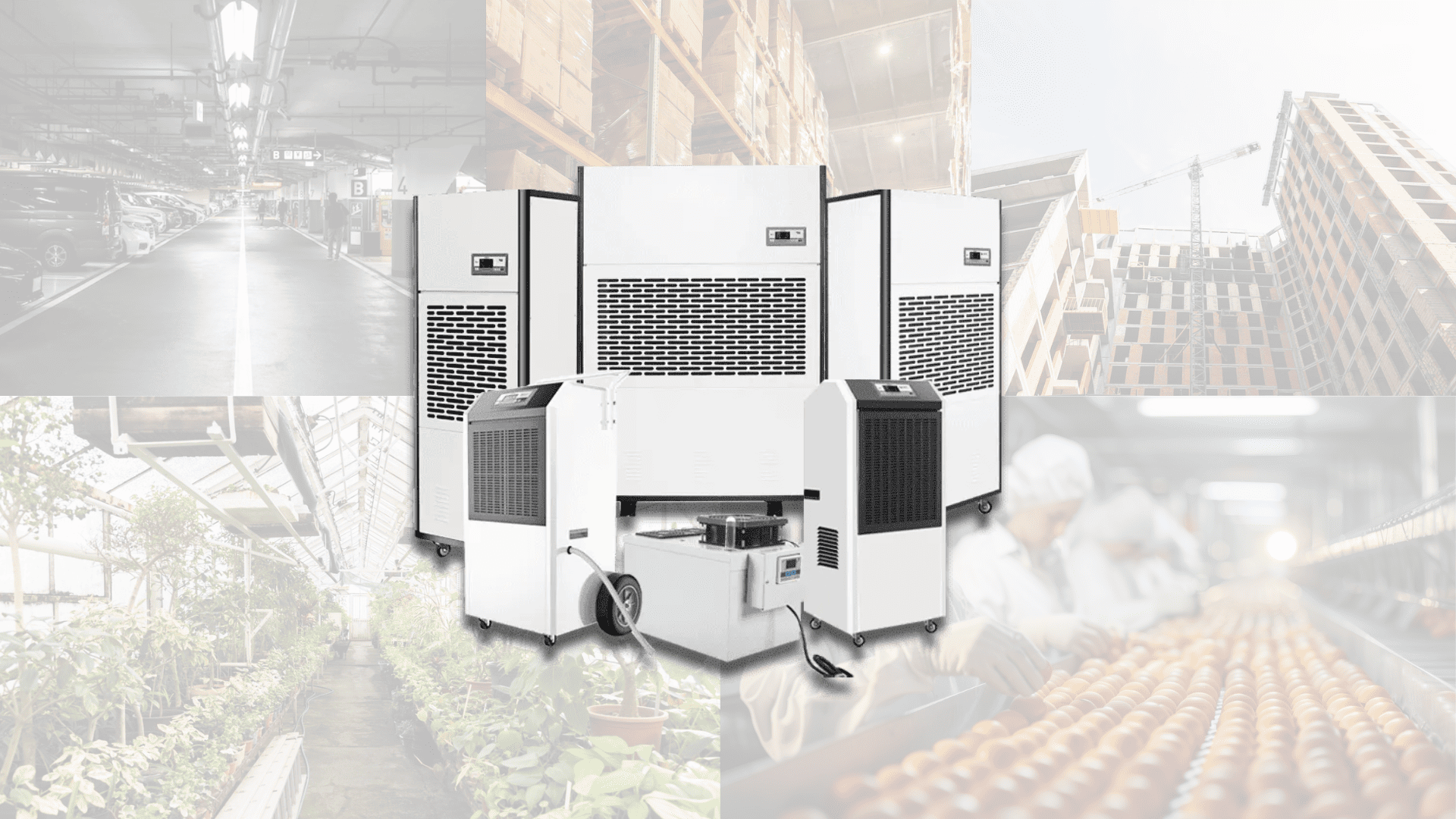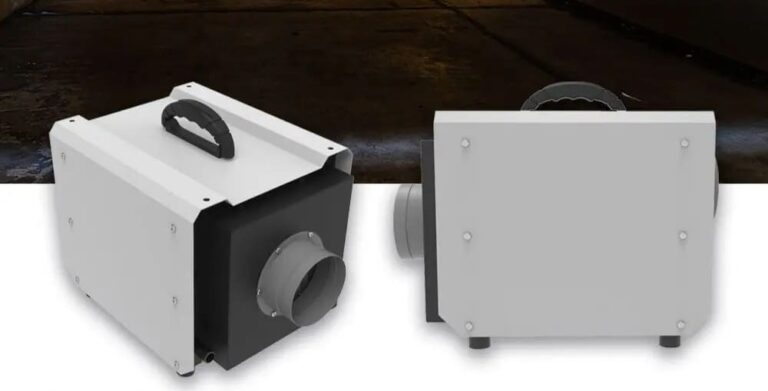What is the main purpose of dehumidifiers? To reduce the humidity of the indoor air. As you know, there are two main types of dehumidifiers: commercial and residential.
But dehumidifiers are not only manufactured for commercial or residential spaces to control humidity levels. Today, in this discussion, we’ll walk you through 11 other areas where a dehumidifier is the only effective option to control humidity levels.
Let’s begin…
1. Basement Moisture Control
Damp basements can be a nightmare. Because this is the only area in your house where sunlight can’t reach. So eventually the moisture level gradually rises up which eventually helps to grow molds. There is not enough ventilation for the basement. Eventually the moisture gets trapped in your basement which creates a musty odor also.
In this case, dehumidifier application could be the only effective solution you might consider. Depending on the size of your basement and the average moisture generating rate, you should determine which particular dehumidifier you should collect for your basement.
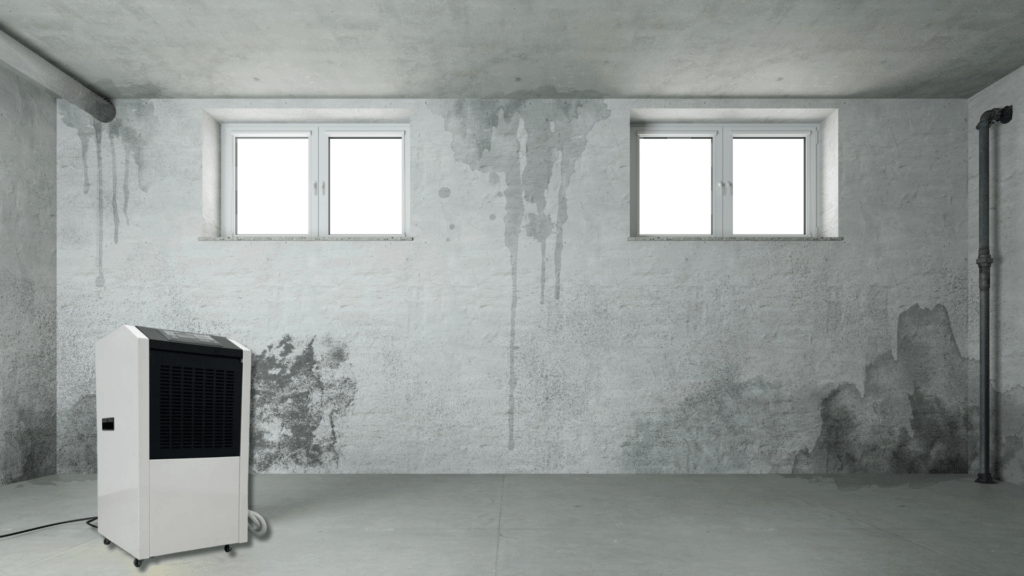
2. Humidity Control in Construction Sites
Construction site is the area where moistures are constantly produced. Sometimes moisture controlling becomes the first priority when you need to dry up the walls in the right way. For such areas, you’ll need dehumidifiers that are portable, sturdy enough, and capable of handling large areas.
It eventually might affect the longevity of the construction. Especially when you’re dealing with the interior of your construction, controlling humidity becomes the crucial part. In most cases, portable industrial dehumidifiers could be your project saver! They have heavy capacity to control the humidity level, and they come with caster wheels which will allow you to move them anywhere you want.

3. Managing Excess Moisture in Warehouses
If you’re a warehouse manager then unrestrained moisture can lead you to face significant operational setbacks. In most cases, warehouses contain some sensitive parts like electronic and mechanical components, product raw materials, and large machines that are prone to get rusted due to moisture. So undoubtedly, moisture controlling is crucial here.
In this case, getting an industrial dehumidifier could be a smart move. But before spending your valuable money, you need to determine which particular dehumidifier is appropriate for your warehouse.
Depending on some major factor such as the area of your warehouse, the average air volume of the indoor, you need to determine which one will be appropriate for your warehouse. For instance, here are some appropriate models for different size of warehouses-
| Model | Dehumidifying capacity | Air volume | Rated Power | Area(recommend) | Net Weight |
| YC-20S | 480L/D; 1015Pints/D | 3800m3/h | 6700W | up to 400m2 | 175kg |
| YC-30S | 720L/D; 1520Pints/D | 7000m3/h | 12350W | Up to 700m2 | 350kg |
| YC-40S | 960L/D; 2025Pints/D | 12000m3/h | 16500W | Up to 900m2 | 360kg |
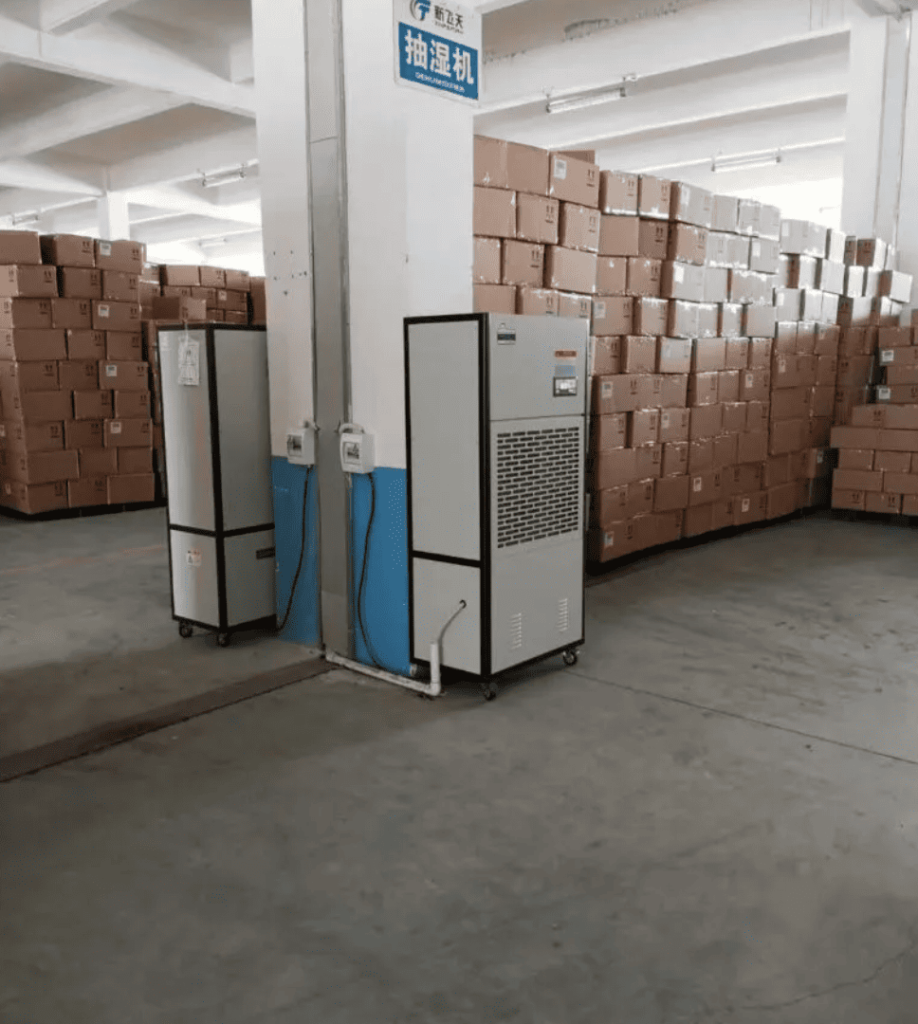
4. Protecting Important Documents and Artifacts from Humidity
Increased humidity can have a direct impact on your important documents (it can be old newspapers, books, etc). Even less humidity can make the pages fragile. So, maintaining the ideal humidity level is extremely important.
If your room mainly contains paper materials, you should maintain the humidity between 30% and 55%. In winter, the humidity level drops, so please check the humidity level in your room if you live in a cold climate area. If it’s below 30%, humidifiers can be used to bring the humidity level to the optimal state. Wall humidifiers can be handy in this case.
However, if you are struggling with increased humidity levels, getting a residential dehumidifier could be a better solution. If the space is small, a residential dehumidifier would be good. But if the area is larger than 200m2, using an industrial unit could be a strategic move.
5. Art Galleries and Museums
Art galleries and museums have precious and hygroscopic antique items. To keep them safe and intact, you need to ensure the temperature is between 16–24°C (61–75°F), as temperature fluctuations indirectly affect RH (Relative Humidity). For instance, a 10°C increase can double chemical degradation rates in paper. Eventually, it will cause rusting of your furniture joints, shrinking of photo frames, flaking of paints, etc.
But temperature controlling devices can’t alone maintain the optimal humidity level, especially for areas like art galleries and museums. According to multiple resources, for such places you should maintain the RH in between 40-60%. In that case, using a dehumidifier is the only option to get the most effective results as it has the highest capability to reduce humidity from the air.
6. Reducing Humidity in Libraries
Library means a room or papers! Books are hygroscopic materials, making them absorb and release moisture based on the surrounding environment. So, the ideal temperature for a library should be around 18°C and the RH should be around 50%. Dehumidifiers can’t deal with the temperature, but it can maintain the humidity level.
Especially when you’re in a coastal region, you’ll face frequent temperature changes in the environment. On the other hand, a library is the place that faces frequent traffic. Each person introduces moisture through transpiration and respiration. So, considering all those factors, maintaining the humidity becomes quite challenging with an AC with dehumidifying features.
Especially when your library is big, there is no effective alternative except using a dehumidifier.
7. Air Quality and Humidity Control in Hospitals and Labs
Maintaining air quality, humidity, and temperature combinedly play a crucial role to maintain the ideal environment for patients, doctors, and nurses. Controlling temperature is easy (you can just install an air conditioner). But for improving the air quality and maintaining the humidity level optimal, a dehumidifier is your only effective option.
But yes, a hospital has different sections where different moisture and temperature controlling is needed. Here are some areas where temperature and humidity control is necessary-
| Room | Optimal Temperature (ºC) | Required Relative Humidity (%) |
| OT (Operation Theatre) | 18 – 20°C | 50 – 55% RH |
| Immunology, Biology lab, Dark Room, Pathology Department, Hematology, Chemical lab. | 22-24°C | 35-50% RH |
| Imaging Department: Mammography, Fluoroscopy, Tomography, CT Scanner, Angiology, Ultrasound, MRI, and X-ray room. | 22 – 24°C | 50% RH |
| Laser Eye Surgery Rooms | 18-24°C | 30-40% RH |
8. Optimizing Humidity Levels in Greenhouses
Greenhouses are the areas where constant water supply is needed to keep the plants alive and healthy. And more water means more moisture in the indoor air. It’s recommended to keep the moisture level under 80% for green houses. When the moisture is excessive, plants start to face infection.
You might consider taking the humid air out from the indoor by exhaust fans to control the humidity level. But it will significantly increase your electricity bill, which eventually will affect your profit margin. Using a greenhouse dehumidifier will be a suitable deal here.
Whatever brand or model you choose, try to install a dehumidifier that can maintain 80% humidity at 18ºC – 24ºC temperature.
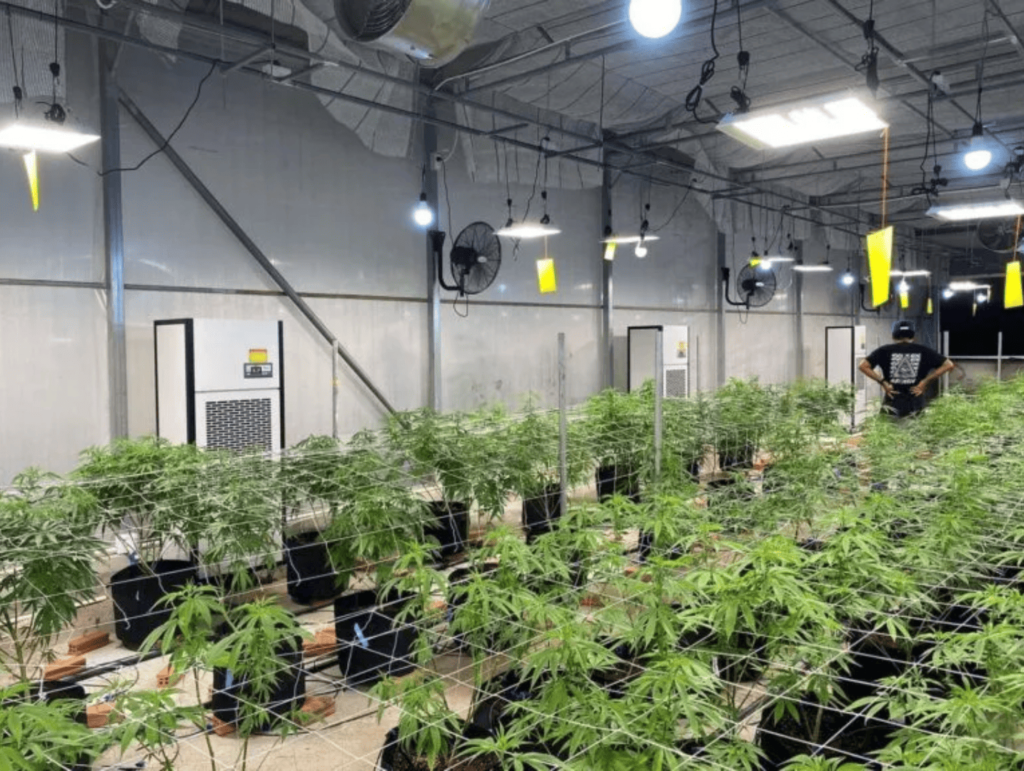
9. Reducing Humidity in Commercial Kitchens
Restaurants and commercial kitchens generate too much moisture. The more humid the air means it will affect the quality of the foods stored in the kitchen. Exhaust hoods and proper ventilation can help to get rid of it. But when the kitchen is big, the built-in ventilation and air circulation system is not enough to handle that.
Dehumidifiers can play a crucial role here. Just measure the amount of moisture you need to deal with. You can seek professional help to make it done. They’ll suggest what type of dehumidifier can help.
Small kitchens might only need portable dehumidifiers. But if the kitchen is big, you might need to install a ceiling dehumidifier which needs to be integrated with the HVAC system.
10. Maintaining Indoor Pools
For privacy purposes, indoor pools are enclosed by walls to ensure a secluded environment. This setup makes the humidity get trapped in it. So you’ll need a dehumidifying setup that can take the humidity level to the optimal level.
In this case, the relative humidity (RH) should be around 50 – 60%. If the humidity is below 50%, it will encourage water evaporation. And if it exceeds 60%, the extra humidity will be absorbed by the walls. So, it’s a good idea if you use an industrial grade dehumidifier to control the humidity level.
There are plenty of options in the market. Considering your pool size, you can choose the appropriate dehumidifier for your indoor swimming pool.
11. Maintaining Data Centers and Server Rooms
As data centers and server rooms contain many electronic components, it’s crucial to maintain the optimal humidity and temperature. According to multiple sources, data centers should maintain 18 – 27°C temperature and the relative humidity (RH) should be around 40 – 60%. Excess moisture can cause the circuit board to absorb that from the humid air.
Dehumidifiers can help to prevent such situations. Refrigerant dehumidifiers work well in data centers. But we suggest using industrial grade dehumidifiers in such cases.
Wrapping Up
Well, there we have it. There are thousands of areas where dehumidifiers can be applied. But not in all cases using a dehumidifier is compulsory. Whatever your situation is – first you need to determine how much humidity you need to deal with. If it’s beyond the capability of your air conditioner, you can invite a dehumidifier to the space you’re dealing with.
We hope this discussion helps, Good luck!

